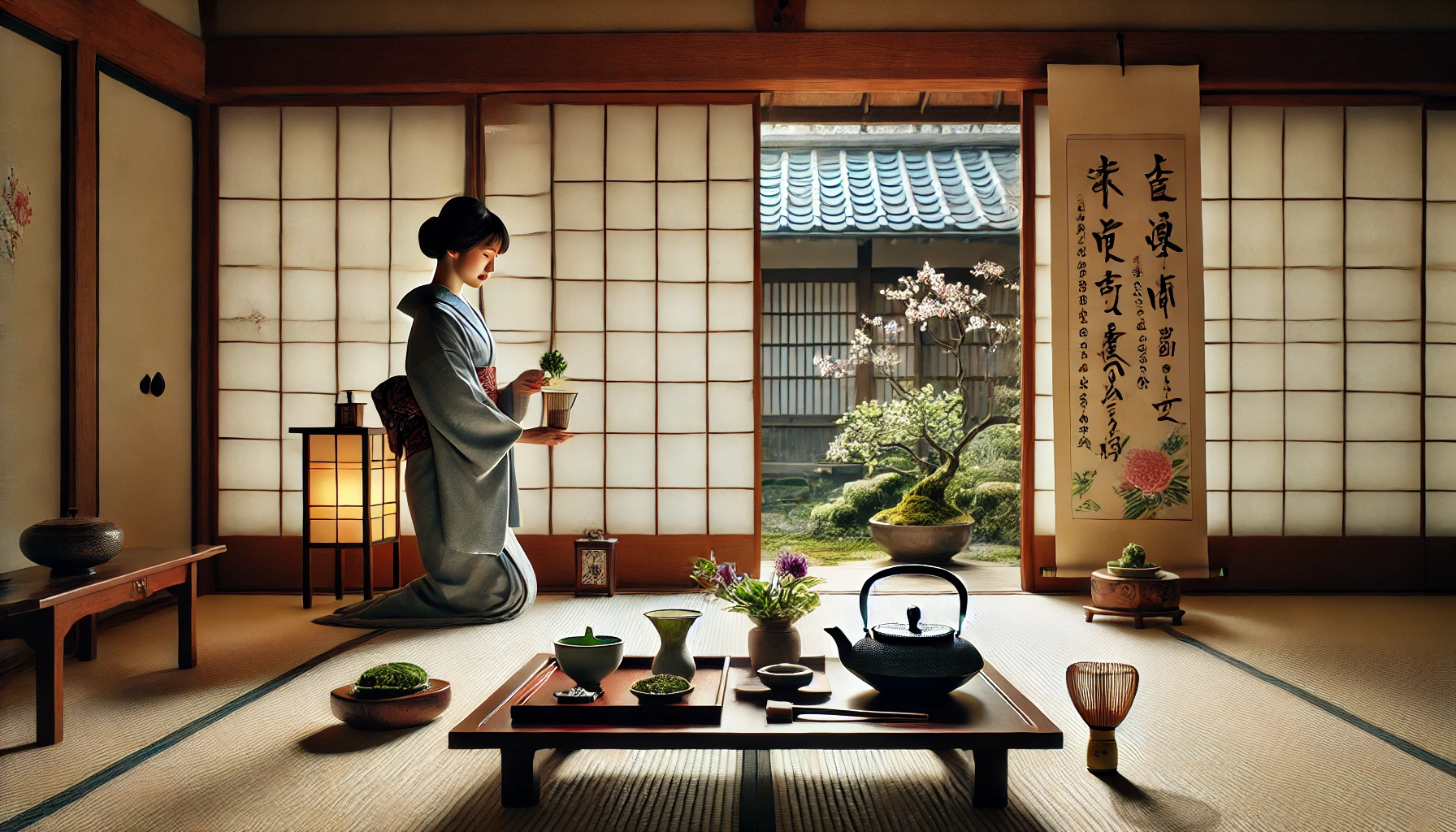
The Japanese tea ceremony, also known as “Chanoyu,” “Sado,” or “Chado,” is more than just a method of preparing and drinking tea. It is a profound cultural activity that embodies the aesthetic, spiritual, and philosophical aspects of Japanese culture. Rooted in the principles of harmony, respect, purity, and tranquility, the tea ceremony has evolved over centuries, becoming a symbol of Japanese elegance and mindfulness. Whether experienced in a traditional tatami room or a contemporary setting, the tea ceremony offers a moment of serene reflection, connecting participants to the essence of simplicity and grace.
The History and Evolution of the Japanese Tea Ceremony
The Japanese tea ceremony has a rich history that dates back to the 9th century when tea was first introduced to Japan from China by Buddhist monks. Initially, tea was consumed as a medicinal beverage, but by the 12th century, it began to gain popularity among the aristocracy and samurai classes. It wasn’t until the 16th century, under the influence of the great tea master Sen no Rikyu, that the tea ceremony began to take on its modern form, emphasizing the principles of Wabi (austerity) and Sabi (the beauty of aging).
Sen no Rikyu is credited with refining the tea ceremony into an art form that celebrates simplicity, humility, and the beauty of imperfection. He introduced the concept of the “Way of Tea” (Chado), which integrates the preparation and consumption of tea with Zen Buddhist principles. His influence is still deeply felt in contemporary tea ceremonies, where the focus is on creating a serene atmosphere that allows participants to appreciate the fleeting beauty of each moment.
Over the centuries, the tea ceremony has continued to evolve, incorporating various regional styles and schools of thought. Today, it remains a vital part of Japanese culture, practiced by people of all ages and backgrounds. Whether performed in a traditional tea room or a modern space, the essence of the tea ceremony remains unchanged—offering a moment of peace and introspection in a fast-paced world.
The Rituals and Symbolism of the Tea Ceremony
The Japanese tea ceremony is a highly ritualized event, with each gesture and movement carrying deep symbolic meaning. The ceremony typically begins with the host cleaning the tea utensils—a process that symbolizes the removal of impurities from both the environment and the participants’ minds. The utensils used in the ceremony, such as the tea bowl (chawan), tea whisk (chasen), and tea scoop (chashaku), are carefully chosen and often hold historical or artistic significance.
The tea itself is usually powdered green tea, known as matcha, which is whisked into a frothy liquid and served in small, delicate portions. The act of preparing and drinking tea is done in silence, allowing participants to focus on the sensory experience—the sound of the tea being whisked, the sight of the steam rising from the bowl, the feel of the bowl in one’s hands, and the taste of the tea itself. This mindful approach to tea drinking is intended to heighten the participants’ awareness of the present moment, fostering a sense of calm and clarity.
Each element of the tea ceremony, from the choice of utensils to the arrangement of the room, is imbued with meaning. For example, the use of natural materials such as wood, bamboo, and clay reflects the tea ceremony’s connection to nature, while the presence of a hanging scroll (kakemono) or a simple flower arrangement (ikebana) serves as a reminder of the impermanence of life. Through these carefully considered details, the tea ceremony becomes a meditation on the beauty of simplicity and the passage of time.
The Role of the Tea Master in the Ceremony
The tea master, or “teishu,” plays a central role in the Japanese tea ceremony, guiding the participants through the ritual with grace and precision. The tea master’s responsibilities extend beyond the preparation of tea—they are also tasked with creating an environment that embodies the principles of the tea ceremony, from the selection of utensils and decorations to the arrangement of the tea room.
Training to become a tea master is a lifelong endeavor, requiring years of study and practice. Students learn not only the technical skills of tea preparation but also the philosophical and aesthetic principles that underpin the ceremony. This includes studying the history of the tea ceremony, mastering the art of calligraphy and flower arranging, and developing an appreciation for traditional Japanese arts such as pottery and lacquerware.
The tea master’s role is not to impress but to serve. Every action they take during the ceremony is performed with the intention of making the guests feel comfortable and at ease. The tea master’s movements are slow and deliberate, reflecting a deep sense of mindfulness and respect for the process. By embodying the principles of harmony, respect, purity, and tranquility, the tea master helps to create a space where participants can connect with the essence of the tea ceremony.
Experiencing a Japanese Tea Ceremony: What to Expect
For those new to the Japanese tea ceremony, the experience can be both enchanting and enlightening. Upon entering the tea room, guests are often struck by the simplicity and beauty of the space—typically a small, dimly lit room with tatami mats, sliding shoji doors, and minimal decoration. The atmosphere is one of calm and stillness, encouraging guests to leave the distractions of the outside world behind and focus on the present moment.
Before the ceremony begins, guests are usually invited to admire the room’s decorations, such as a hanging scroll or a flower arrangement. This is followed by a ritual purification, where guests wash their hands and rinse their mouths at a stone basin (tsukubai) outside the tea room, symbolizing the cleansing of both body and spirit.
Once inside the tea room, guests sit in a kneeling position (seiza) on the tatami mats, facing the tea master. The ceremony begins with the tea master bringing in the utensils and meticulously cleaning them before preparing the tea. Guests are then served a small sweet (wagashi) to balance the bitterness of the matcha, which is served in individual bowls. The tea is enjoyed in silence, with each guest taking a moment to appreciate the bowl’s craftsmanship and the tea’s flavor.
After the tea has been consumed, guests may be invited to inspect the utensils and ask the tea master questions about the ceremony. The experience concludes with a final bow, signaling the end of the ceremony. While the tea ceremony may seem simple on the surface, it is rich in meaning and symbolism, offering participants a unique insight into Japanese culture and philosophy.
The Japanese tea ceremony is more than just a cultural tradition—it is a way of life. Through its rituals and symbolism, the tea ceremony teaches the importance of mindfulness, respect, and simplicity, values that are as relevant today as they were centuries ago. Whether you are a participant or an observer, the tea ceremony offers a moment of tranquility and reflection, inviting you to slow down and appreciate the beauty of the present moment.








